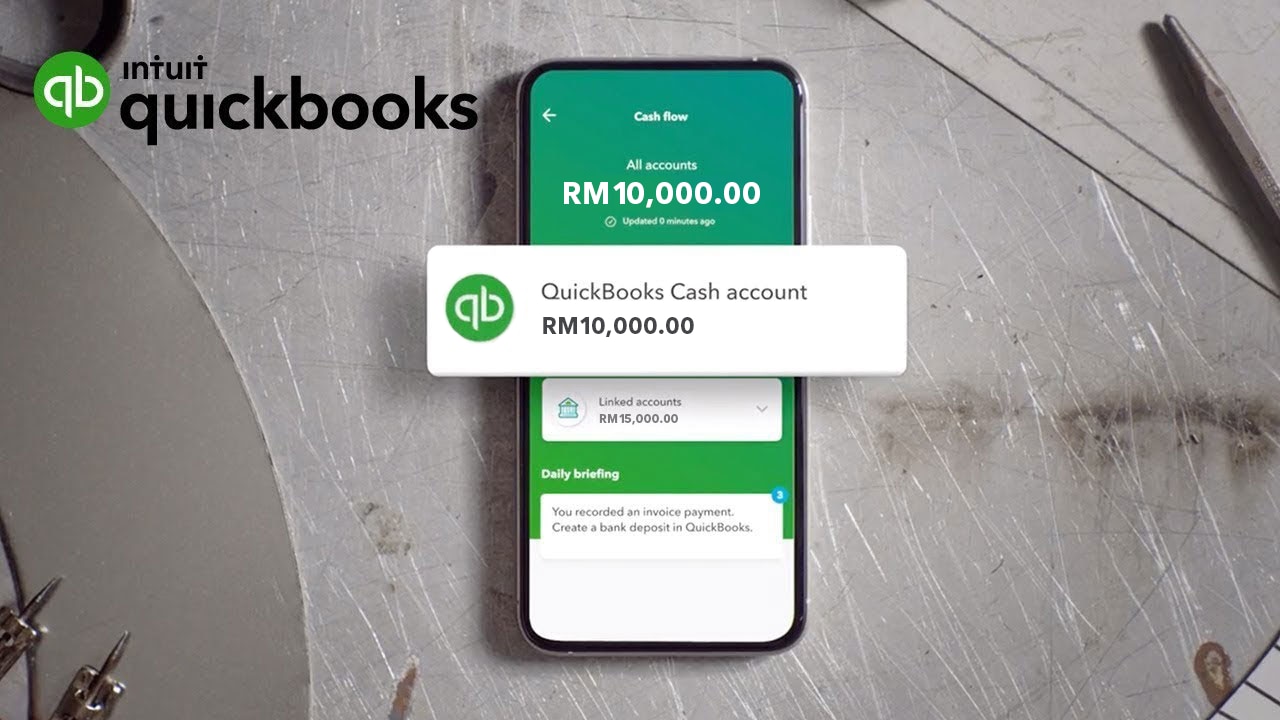It’s an uncertain time for businesses, but the new cash flow planner can give you insight into your cash flow for the next 90 days. Get an overview of your cash flow, and gaze into your future business expense and income scenarios — without messing up your actual books.
Effortlessly manage your business cash flow right in QuickBooks
Take control of your cash flow
Sync your bank to gain insight into your cash flow. Discover ways to improve it, like chasing overdue invoices, and reviewing the necessity of the recurring expenses.
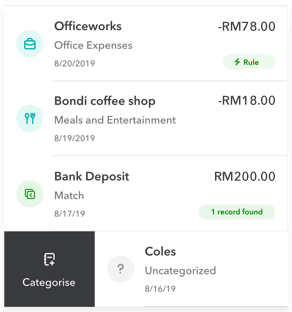
See the future of your cash flow
See how your cash flow might look in the next 90 days, by playing with potential expenses, investments and income scenarios — without messing up your actual books.
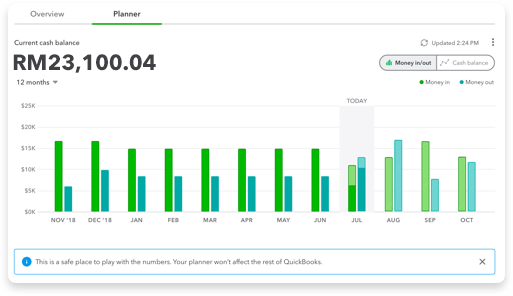
See your cash flow projection
Stay prepared by forecasting money-in and money-out transactions over 30 and 90 days. Your data imports and syncs automatically for up-to-the-minute cash flow analysis, without multiple spreadsheets.
- Gaze and play with your business’ future by using the 90-day cash flow planner.
- Run and export reports including profit and loss, and balance sheet.
- Share a summary of your books with your accountant.
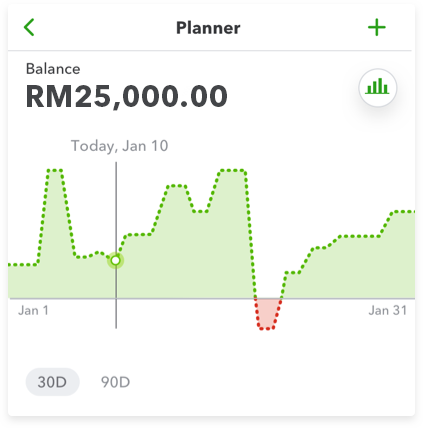
What is the cash flow planner?
The Cash Flow Planner is an interactive tool that forecasts cash flow, which is the in-and-out of your money over the next 90 days. It looks at your financial history to forecast future money in and money out events. You can also add and adjust future events to see how certain changes affect your cash flow without impacting your actual books.
You also have a Cash Flow Overview to get a picture of your cash flow position and take actions to improve it including:
- Money in – Overdue invoices, open invoices, quotes
- Money out – Overdue bills, open bills and other recurring expenses.
To view the Cash Flow Planner and Cash Flow Overview, go to the Cash Flow left menu item on your dashboard:
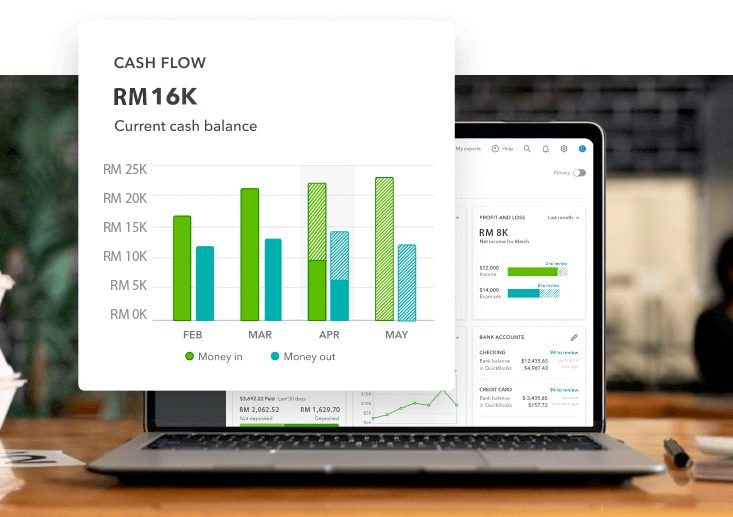
How does the forecast work? What data is included?
The Cash Flow Planner chart uses historical data from your bank accounts connected to QuickBooks Online to forecast future recurring income and expenses. This includes categorized and uncategorized transactions. You can also manually include data to forecast cash flow by adding events that may occur in the future.
The Cash Flow Planner chart does not include:
- Credit card transactions
- Transactions you’ve entered manually into QuickBooks
- Multi-currency enabled files

How do I add events for possible money in or money out?
You can manually add events for potential income and expenses. For example, if you have a big sale coming up, add it as an event so it will be a part of the forecast.
Important: Events aren’t actual transactions and won’t affect your finances in QuickBooks.
- Select the Add Event button.
- Select Money in if the event is income, or Money out if it’s an expense.
- Name the event and enter an amount, then select Continue.
- Select the date when the event will occur.
- When you’re done, select Save.
To edit or delete an event:
- Select and open an event.
- Select the Date, Name, or Amount field, or change whether it’s Money in or Money out.
- When you’re done, select Save.

Frequently asked questions
Cash flow is the net amount of money being transferred into and out of a business at any time. Cash flow is an umbrella term because it covers a lot of different parts of your business. Ultimately, it’s about balancing income with expenditures.
But what is considered a good cash flow? And what are the characteristics of a strong statement of cash flows? These are questions many Malaysian small business owners ask when they first start tracking cash flow and preparing cash flow statements.
What a good cash flow statement looks like

The amount of cash you should have available can vary significantly depending on the type of business you own and your operations.
With this in mind, there’s no ‘perfect’ cash flow statement that applies to every business – however, there are three general indicators that your cash flow is in a healthy position:
- You record positive cash flow from operating activities: The major requirement of a healthy business is its ability to generate more cash than it spends. As a result, your business’s core operations should consistently grow your net cash flow over time.
- Your customer payments are up to date: Late payments frequently contribute to an unhealthy cash flow, as business owners are forced to bear unnecessary expenses such as overdraft fees as a direct consequence. To minimise delayed payments, you should calculate your debtor days (the average time it takes for your customers to pay you) and work out what an acceptable number of debtor days is. Generally, the acceptable number of debtor days will depend on your credit terms and business model, but the lower the number, the better.
- Your investments are funded by cash, not financing: Although from time to time, having a positive net cash flow from financing activities is necessary when expanding your business, ideally it should not be a common practice. This suggests the company is using its cash flow from operating activities to pay off external financing and issue dividends, instead of taking out new loans. Simply put, it reassures investors that the fundamentals of the business are strong enough and it can pay for its own growth, instead of relying on one-time gains such as selling its assets or raising funds.
Quick ways to optimise cash flow and avoid problems
- Streamline your invoicing process: However you track payments, it’s important to be able to see what you’re owed and know how to collect unpaid invoices. QuickBooks makes it easy to manage invoices from end-to-end. You can create, track and send reminders to customers, all in one place.
- Reduce outgoings: Look for areas in which you can reduce recurring monthly, quarterly and annually bills. Can you reduce the cost of utilities, rent, payroll, subscriptions or other unnecessary expenses?
- Increase income: Consider how you can increase revenue by exploring new sales channels, expanding your offering or selling off assets you no longer need for a quick cash injection.
- Expand your payment options: There are plenty of reasons why invoices go unpaid and a lack of payment options is one of them. It’s a good idea to be flexible about taking payments. Accepting cheques and PayPal is a good place to start, as well as accepting credit and debit cards.
- Consider your borrowing options: Injecting money into your business by borrowing is another way to boost your cash flow. Ask your current financial service provider what they can offer to help you bridge the gap in the case of cash shortfalls.
- Negotiate accounts payable: Negotiating payment terms with suppliers or other payees can help you distribute your cash flow more evenly. With more working capital available, you can prioritise your most important expenses and prevent minor cash flow problems from becoming major issues.
- Customise and automate your financial reports: There are a handful of accounting reports that business owners should be familiar with. Profit and loss statements and balance sheet are two examples of reports that need to be checked and understood frequently to understand your cash position.
Perhaps the greatest advantage of an accounting software over Excel spreadsheets is the ability to customise and automate these reports, so you’ll always have a clear picture of your financials, including cash flow.
Tips for managing cash flow effectively

No matter you’re running a start-up or an established business, managing cash flow effectively is critical to long-term success.
But why does cash flow matter?
Many business owners think profitability is the only crucial metric for success. In some ways, cash flow is more important because it tells you how much money you have coming into the business and the amount of money going out.
In other words, cash flow indicates whether you can pay for essential expenses like stock, employees, rent and other operating expenses. Poor cash flow management is one of the biggest reason businesses fail. Without access to sufficient cash, it is hard to keep the business afloat.
So, what can you do to ensure a healthy cash flow? We’ve created a handy infographic with tips for managing your cash flow effectively to help you get started.

